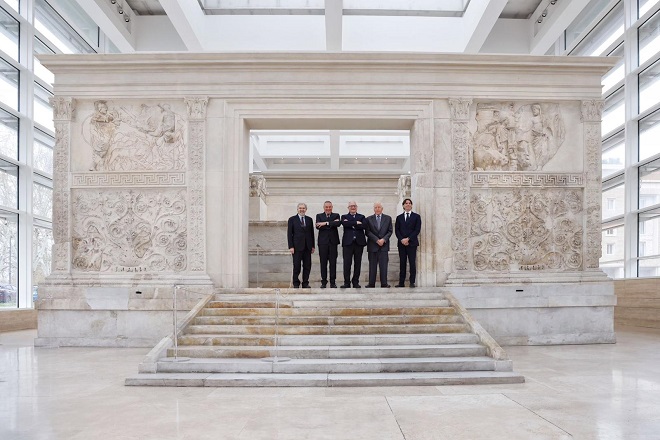Nestled within the bustling streets of Rome, the Mausoleum of Augustus stands as a monumental testament to the grandeur of ancient Roman architecture and the enduring legacy of its first emperor. Recently, this iconic landmark has been the focus of a significant restoration effort, thanks to a generous donation of 700,000 euros from the Bulgari Foundation. This contribution is earmarked for the development of a museum setup that promises to enhance the visitor experience, blending historical reverence with state-of-the-art presentation.
Constructed in 28 BC, the Mausoleum of Augustus was designed as a final resting place for the emperor and his family. This grand structure, characterized by its circular plan and imposing dimensions, was a bold statement of power and a symbol of the Pax Romana — a period marked by peace and prosperity under Augustus’ rule. The architectural design features several concentric rings, faced with travertine and topped with cypress trees, culminating in a conical roof adorned with a striking bronze statue of Augustus.
Over the centuries, however, this majestic tomb experienced periods of neglect and repurposing, which obscured its original splendor. It served various roles, from a fortress in the medieval era to a concert hall in the early 20th century, before being reclaimed as an archaeological site under Mussolini’s regime.
The recent restoration efforts, initiated in 2007 and culminating in the reopening of the site in 2021, have focused on stabilizing the structure and excavating previously inaccessible areas. The project, supported initially by Fondazione Tim and now furthered by the Bulgari Foundation, aims to peel back the layers of history and offer visitors a direct link to Rome’s imperial past.
The planned museum itinerary within the Mausoleum is particularly exciting. It is set to guide visitors through a clockwise exploration of the site’s various historical phases. Each room along the path will highlight different moments in the life of the Mausoleum, from its inception and use by the imperial family to its various transformations throughout the centuries. This journey through time will be enriched by archaeological finds from recent excavations and other artifacts that have been preserved but never displayed.
The restoration and museum project not only revitalizes a key historical site but also reflects a broader trend in Italy’s approach to cultural heritage — one that embraces modernity while honoring the past. The involvement of the Bulgari Foundation underscores the commitment of private entities in preserving Italy’s rich historical landscape.
As the Mausoleum of Augustus prepares to enter this new phase in its long history, it stands as a beacon of cultural pride and a reminder of the layers of history that contribute to the fabric of modern Rome. For both tourists and locals, the revamped site will offer a deeper understanding of the city’s imperial legacy, encapsulated within the walls of one of its most remarkable monuments.
Visitors to Rome can look forward to experiencing this historical gem in a new light, with the promise of an immersive journey through time that connects the splendor of ancient Rome with the vibrancy of the city today. The Mausoleum of Augustus, once a symbol of eternal rest, is now poised to be a lively center of cultural education and appreciation, thanks to the vision and generosity that continue to shape its legacy.
Photo from the webiste: Roma Capitale

